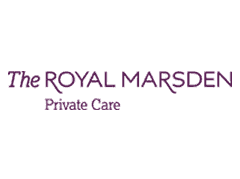Personalisation has long been the holy grail of digital marketing. Customers expect brands to understand them, anticipate their needs, and deliver relevant experiences. But with third-party cookies disappearing and privacy regulations tightening, businesses are facing a critical question: how do we personalise without invading trust?
The answer lies in first-party and zero-party data. This is the information your customers willingly share with you. Done right, this isn’t just a workaround. It’s an opportunity to build deeper loyalty, stronger trust, and more effective marketing.
What is First-Party vs. Zero-Party Data?
- First-Party Data: Information collected directly through your owned channels, such as website analytics, purchase history, email engagement, and CRM data.
- Zero-Party Data: Information that customers intentionally and proactively share, such as their preferences, interests, intentions, and feedback (e.g., via surveys, quizzes, sign-up forms, loyalty programs).
Unlike third-party data, these are known to be more transparent, ethical, and reliable, since they come directly from your audience.
Why Hyper-Personalisation Matters
Today’s consumers don’t just want personalisation, they expect it.
According to the McKinsey report, 76% of customers feel frustrated when experiences aren’t personalised. Equally, Epsilon states 80% are more likely to purchase when brands offer tailored experiences.
Younger audiences (Gen Z, Millennials) are more willing to share data if it leads to relevant and valuable interactions. This makes personalisation not just a competitive advantage but a necessity.
Tactics for Collecting First & Zero-Party Data
Here are smart, ethical ways to gather the insights you need:
- Interactive Content – Quizzes, style finders, and product match tools that capture preferences while adding value.
- Progressive Profiling – Collecting small pieces of information over time rather than overwhelming customers with long forms.
- Loyalty Programs – Reward customers for sharing preferences, birthdays, purchase motivations, or feedback.
- Preference Centres – Giving subscribers control over the type of content and frequency they want.
- Surveys & Feedback Loops – Asking directly, in exchange for improved experiences.
The key is to make it a fair value exchange. Customers share data only when they see a clear benefit.

Applying Data Responsibly for Hyper-Personalisation
Collecting data is only step one. How you use it makes the difference:
Segmentation & Targeting
Tailor campaigns to audience segments based on actual behaviour and stated preferences.
This can be applied across channels such as Google Ads, where first-party data helps re-engage past visitors with highly relevant offers, and LinkedIn Ads, where zero-party insights drive sharper B2B targeting.
Dynamic Content
Adapt website, email, and ad content in real time to reflect each customer’s profile. Through email marketing, for example, subscribers can receive personalised content, offers, and reminders based on their stated preferences.
Predictive Recommendations
Use AI/ML responsibly to suggest products or content the customer truly values. When connected with remarketing and email workflows, this creates consistent journeys across platforms.
Privacy by Design
Be transparent, clear about consent, and allow easy opt-outs to build long-term trust.
When customers see the payoff, relevant recommendations, timely offers, and experiences that feel “for them”, they engage more deeply.
The Trust Dividend
Personalisation without trust is just intrusion. But when customers know they’re in control, personalisation becomes a relationship-builder. Brands that master this balance will not only improve conversions but also strengthen loyalty, advocacy, and lifetime value.
Hyper-personalisation with first and zero-party data isn’t just a replacement for cookies. It’s a chance to build a more ethical, customer-centric marketing model. The brands that succeed will be those that deliver relevance while respecting privacy.
At ExtraDigital, we help businesses design strategies that collect the right data, apply it responsibly, and turn it into experiences customers love. If you want to future-proof your marketing and build stronger connections, let’s talk!
Contact ExtraDigital today to discover how hyper-personalisation can drive growth for your business.










